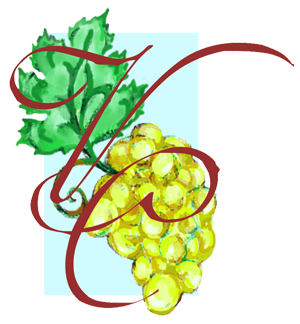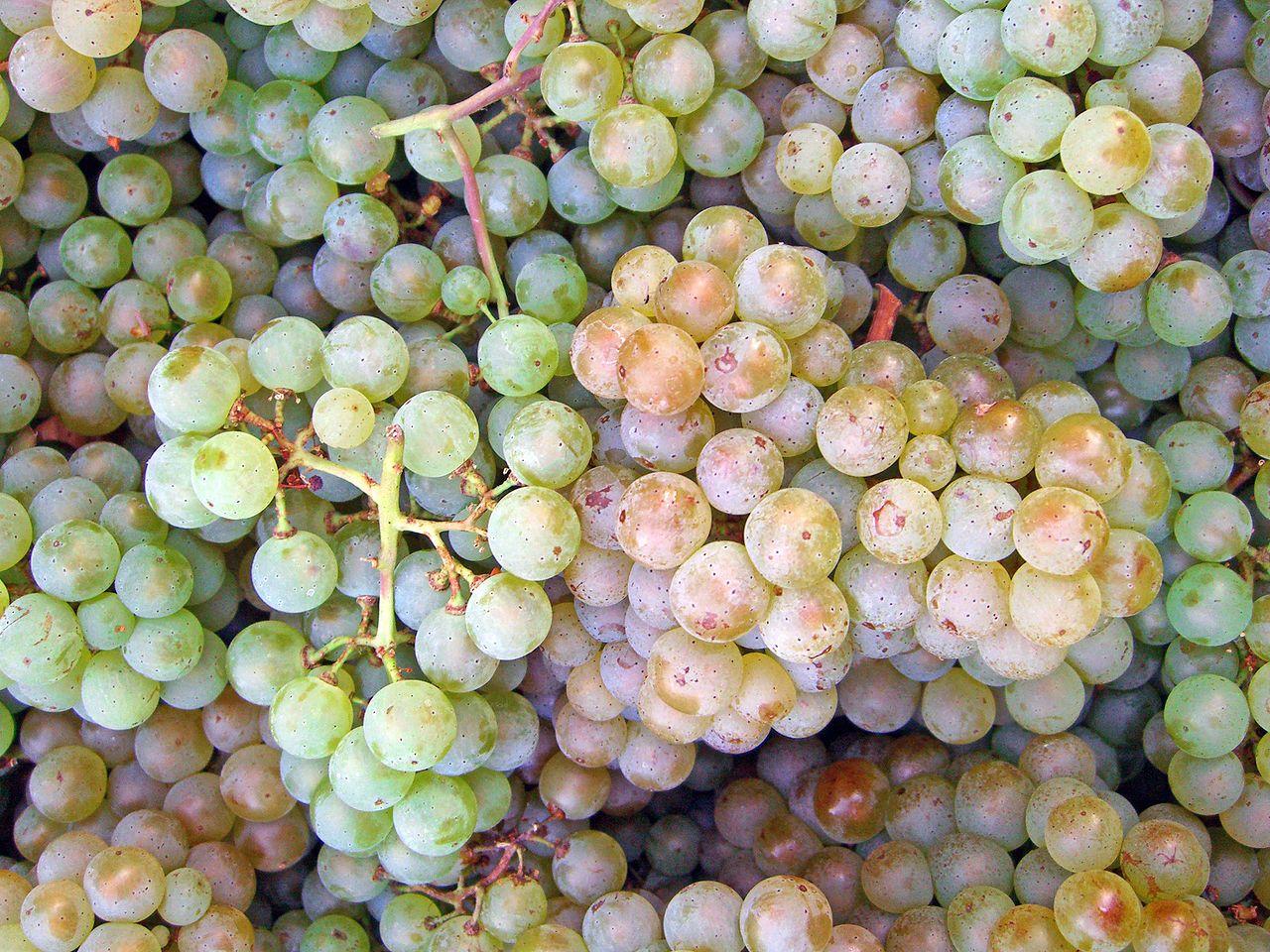Pinot blanc is a white wine grape. It is a point genetic mutation of Pinot noir. Pinot noir is genetically unstable and will occasionally experience a point mutation in which a vine bears all black fruit except for one cane which produces white fruit.
Wine characteristics
In Alsace, Italy and Hungary, the wine produced from this grape is a full-bodied dry white wine while in Germany and Austria they can be either dry or sweet.[4] One of the components of the wine Vin Santo can be Pinot blanc.[4
In France the grape is often blended with Klevner, sometimes referred to by locals as "true Pinot," and Auxerrois grapes, in order to give it a more alsacian flavor.[7]
Bottles labeled Pinot Blanc offer fruity aromas, often of apple, citrus fruit, and floral characteristics. Bottles that are varietally pure, although more difficult to find, provide stronger floral characteristics, stone fruits and a headier minerality. Regardless of their exact composition, most wines under the label 'Pinot Blanc' are rather high in acidity and are vinified in tank, though more prestigious examples are fermented in large, 100% used oak barrels. Pinot blanc wines are usually made for immediate consumption.
Names in other regions
Pinot blanc's name varies by region. In Austria it may be bottled as Weissburgunder or Klevner. Weissburgunder is also use in the Südtirol/Alto Adige region of north east Italy(also occasionally named so in Alsace). Hungary calls it Fehér Burgundi. Spain and Italy refer to it as Pinot bianco. In the Czech Republic it is known as Rulandské Bilé, in Slovakia Rulandské Biele, and in Croatia Pinot bijeli or Burgundac bijeli. In Serbia it is called Beli burgundac.




